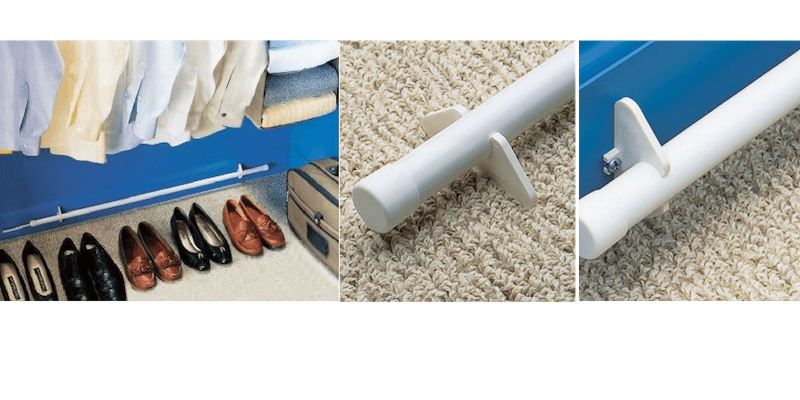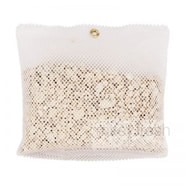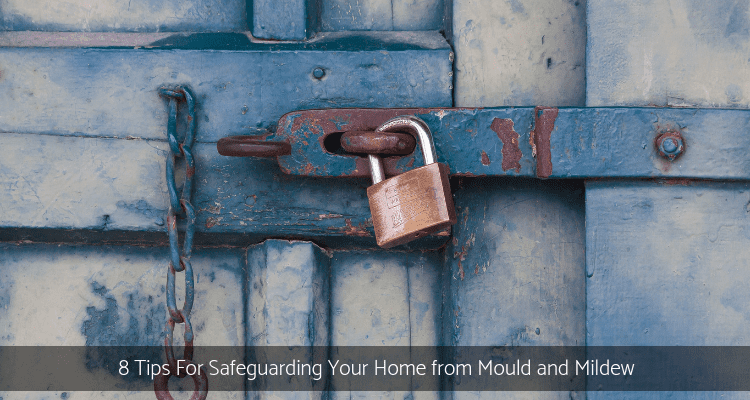A fungus of any kind in your home is bound to cause a few shrieks and attract disgusted glances. Mould and mildew are the most commonly occurring forms of fungi in homes. They thrive in warm, humid and moist conditions, these fungi can grow anywhere – on shoes, clothing, curtains, cupboards, indoor plant pots, cooked food, fruits, and raw vegetables.
Difference Between Mould and Mildew
The main difference between these two fungi is their colour. Mildew looks like a grey and white powdery substance growing on the surface. On the other hand, mould is black, green, or yellow in colour.
Mould is more likely to grow on foods, plants, walls and furnishings in the house, while mildew usually grows on fabrics, on carpets, ion paper and the furniture.
Causes of Mould and Mildew Growth
Both mould and mildew are most likely to grow in areas in your house that have little or no exposure to sunlight. This includes garages, basement, kitchens, and bathrooms.
These microscopic organisms gravitate to areas with high moisture. Therefore, a leaking bathroom or kitchen appliance and ineffective indoor cooling in the peak of summer, creates an ideal breeding ground for these fungi. Now we will cover some tips on how to prevent mould and mildew.
Impact of Mould and Mildew on Your Home and Family
Its not just the unpleasant sight and smell of fungi growing in their home, that is the real cause of concern.
- Growth of mildew on the walls and ceilings of your home can lead to substantial structural damage, encourage termites, and require expensive home repairs at a later stage.
- Mould and mildew is also bad for the health of your family. Exposure to mould and mildew spores, can lead to the following health conditions –
- Allergies and skin rashes
- Irritation of the eyes
- Running nose, cough, and congestion
- Worsening of an existing asthma condition
- Nausea, headaches and muscle pain
8 Tips for Preventing Mildew and Mould
The best way to tackle the problem of mildew and mould growth, is to keep your home clean and dry. Here are some simple and effective ways of keeping your home fungus free –
1. Immediately repair any leaking appliances, taps, and pipes in your house.
2. Put wet clothes to dry out as soon as they are washed.
3. Don’t leave wet mops and rags lying around in the house.
4. Ensure that your home has adequate ventilation.
5. Clean the kitchen counter and appliances, and bathroom fixtures regularly. The Surface Spray by Abode is a great chemical-free cleaning option for people sensitive to allergies. Also, use Micro Fibre Cloths for safely cleaning your home.
6. Maintain the humidity levels in your home at less than 50%. One great way to achieve this is by running a dehumidifier in the house, especially during the summer and monsoon season. You can hire a dehumidifier right here on our website.
7. Place storage dehumidifiers in your wardrobes and cupboards, pantries, linen closets, RV’s, boats, rental storage, and basements to reduce dampness and prevent fungal growth.
PRODUCT:
Dampp Chaser
Eliminates mould, mildew, stagnant air in wardrobes and cupboards, pantries, linen closets, RV’s, boats, rental storage, basements.

8. Use natural damp rid products, such as Zeolite packs. Zeolite packs also eliminate moisture, damp and musty smells and reduce bacterial growth safely and naturally from any wardrobe, room, or fridge.
PRODUCT:
Zeolite- Bag of Rocks
Eliminates moisture, damp and musty smells safely and naturally from any wardrobe or room. Reduce mould, mildew, dampness, condensation, odours.

Not only will these dehumidifiers and cleaning products keep your home mould/mildew free, they are a great way to reduce the indoor air pollution in your home.
For more information on how you can make your home safer and healthier for your family, sign up to our regular health home tips. Keep track of our home maintenance tips by following us on Facebook, Twitter and Pinterest.
Towards healthier living, Carol Parr ♥
As Building Biologists, we have acquired knowledge of adverse health effects and recommend effective strategies to reduce occupants’ exposure by eliminating and controlling as many sources of pollutants in order to create healthy indoor living environments that are as exposure-free and natural as practically possible.
References:
World Health Organisation. (2009). WHO Guidelines for Indoor Air Quality, Dampness and Mould. (Online). Available: http://www.euro.who.int/__data/assets/pdf_file/0017/43325/E92645.pdf
National Institute of Medicine. (2004). Damp Indoor Spaces and Health. National Academies Press. (Online). Available: http://www.nap.edu/openbook.php?record_id=11011&page=R8
US Government Accountability Office (2008). Indoor Mold: Better Coordination of Research on Health Effects and More Consistent Guidance would Improve Federal Efforts. (Online). Available: http://www.gao.gov/products/GAO-08-980
Author
-
We’re glad you’re here. We’re Carol and Tony, founders of one of the longest running Healthy Home Blogs in the world, Mitey Fresh Australia. We’ve been on this journey for the last 25 years and are passionate about helping families sift through health hazards and triggers like allergens, mould, water damage, chemicals and EMFs, to get clarity about what’s toxic and what’s not so they can create a healthy and happy home for their family they love. Each month, people visit this blog seeking focus on the health and wellbeing of their loved ones, sustainable and effective practice tips and guides, to help create and manage healthier indoor spaces, improve the built environment that is pleasing to the senses and support healthy living and nature, every day. Starting this blog was to help change people’s lives, one family at a time, and we can’t wait to share how its allowed us to stand next to you and show you how interpreting these synergies between buildings and the environment they are built in will impact upon the health and well-being of those who occupy them. Find out more about Healthy Homes and what this blog can do for you!





